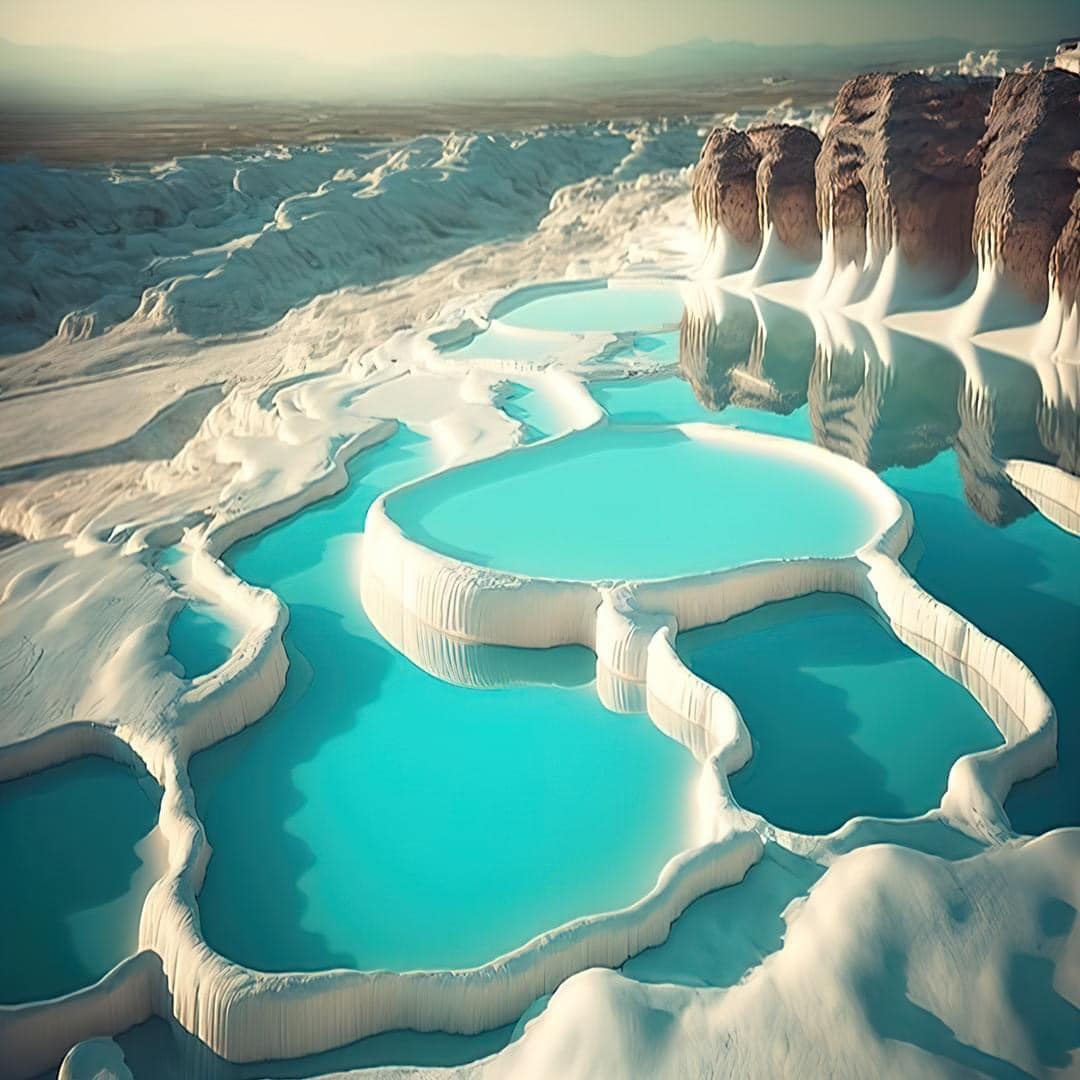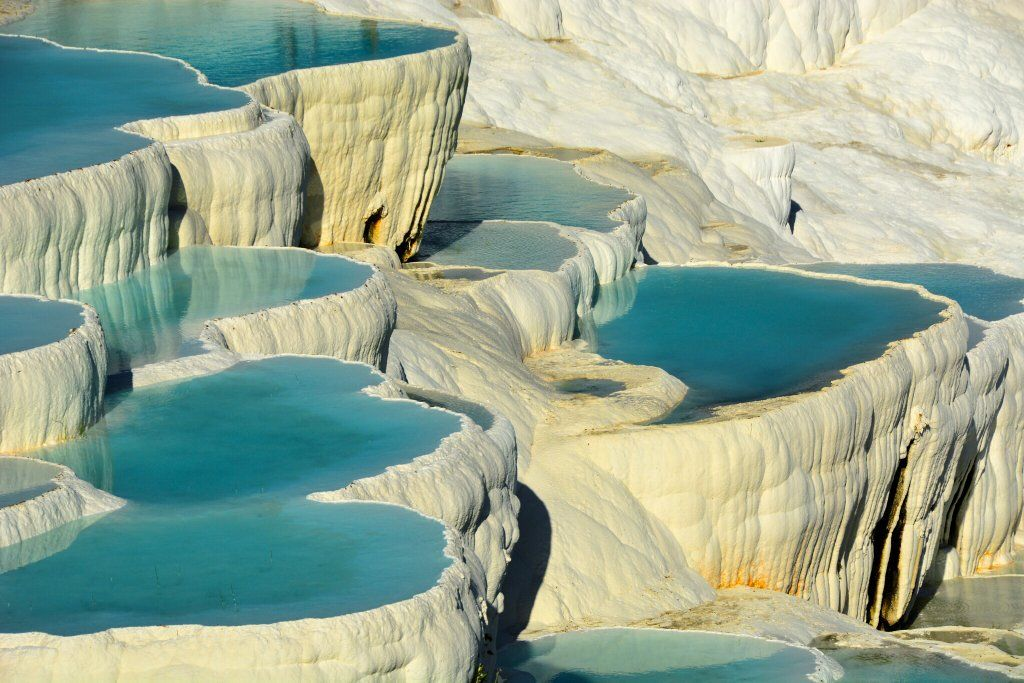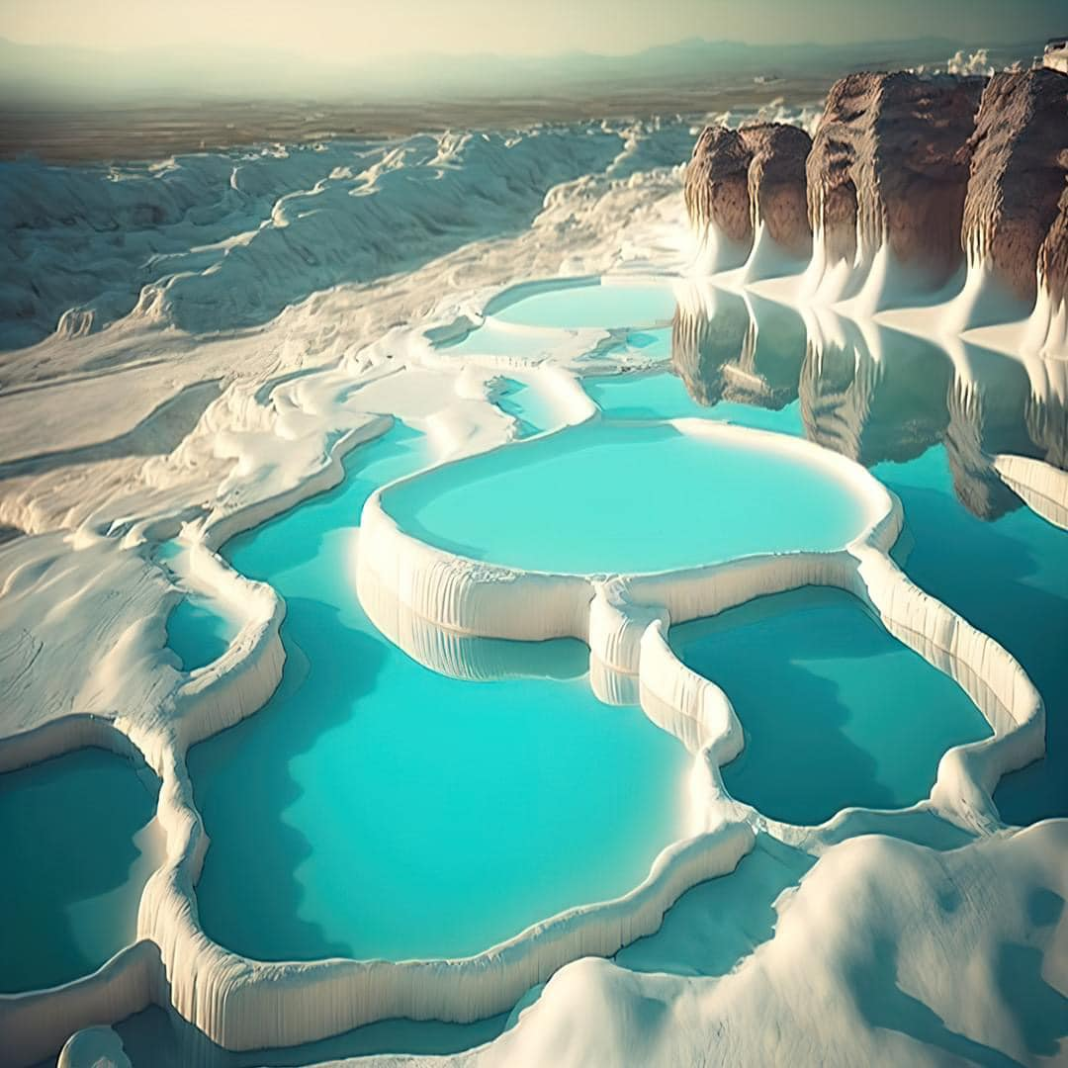Pamukkale, situated in the southwestern region of Turkey, is an unparalleled natural wonder that draws visitors from all corners of the globe. This breathtaking site, whose name translates to “Cotton Castle” in Turkish, is famed for its unique white terraces that evoke an otherworldly landscape. The terraces, formed through millennia of natural processes, consist of calcium carbonate deposits left behind by the region’s abundant hot spring waters. These formations, coupled with their shimmering, mineral-rich pools, create an iconic scene reminiscent of cotton or snow blanketing the mountainside.

The origins of Pamukkale’s stunning terraces lie in the geothermal activity beneath the surface. Hot spring waters, rich in minerals, rise to the surface and flow over the cliffs, depositing calcium carbonate in successive layers. Over time, these deposits solidify, forming the terrace structures that have become emblematic of the site. When the sunlight strikes the white travertines, the entire landscape glows, offering a sight that is both serene and awe-inspiring.

Pamukkale’s allure goes beyond its natural beauty; it holds a legacy that dates back to antiquity. The ancient city of Hierapolis, a UNESCO World Heritage site, sits adjacent to the terraces and was built by the Romans to capitalize on the therapeutic properties of the hot springs. The city was a thriving spa destination, drawing nobles and commoners alike who believed in the curative powers of the waters. Even today, visitors can explore the ruins of Hierapolis, including its impressive amphitheater, necropolis, and Roman baths, adding historical depth to the natural splendor.

The waters of Pamukkale are believed to offer numerous health benefits, including relief from skin conditions, joint pain, and digestive issues. The calcium-laden pools have long been a place of relaxation and rejuvenation, making Pamukkale a prime destination for wellness tourism. Visitors are often seen wading through the terraced basins, experiencing firsthand the warm, soothing embrace of these ancient waters.
Preserving the integrity of Pamukkale has become a priority for Turkish authorities. In past decades, unrestricted access and development led to a decline in the site’s condition, prompting stricter conservation efforts. Today, designated walkways guide tourists to maintain the purity of the terraces and ensure sustainable tourism practices. This careful stewardship allows the site to remain pristine, ensuring future generations can witness its splendor.
Beyond its physical beauty and historical intrigue, Pamukkale offers a range of activities that elevate any visit. Travelers can indulge in hot air balloon rides at sunrise, providing panoramic views of the terraces and surrounding countryside. The sight of the early morning sun casting golden hues over the Cotton Castle is nothing short of magical. Additionally, nearby attractions such as the Pamukkale Antique Pool, known as Cleopatra’s Pool, invite visitors to swim in warm, mineral-rich waters amidst submerged ancient columns.
Pamukkale stands as a testament to nature’s artistry, where geological phenomena and human history intertwine to create an enchanting destination. Whether it’s the mesmerizing white terraces, the healing properties of the hot springs, or the echoes of ancient Rome in Hierapolis, Pamukkale offers an experience that captivates the senses and soothes the soul. For those seeking a blend of natural beauty, wellness, and historical exploration, Pamukkale remains an unmissable jewel of Turkey.
With its remarkable landscape, rich history, and enduring appeal, Pamukkale continues to be a destination that leaves visitors with memories as vivid and timeless as the Cotton Castle itself.

















